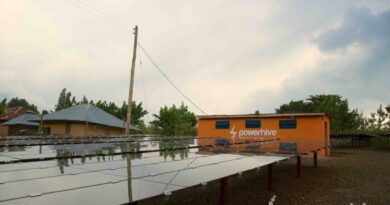UNSW Says India Could Reduce Solar Operational Cost by Rs 6,000 Cr Annually Using PERC Technology
Extracting more energy from every beam of sunlight is critical to reducing the cost of electricity generated by solar cells as it lowers the investment needed, and delivering payback faster.
As the technology of solar energy advances, the solar cell efficiency moves faster than many experts anticipated earlier, that’s good news for solar energy.
Offering an increase in power output from a polycrystalline cell, one of the key technologies in solar panels achieving this high level of performance is the passivation of the rear side of the cell (PERC). Representative Image – Mark Keevers and Martin Green (Photo credit: Lee Henderson / UNSW)
Australia has a long and illustrious research history in solar photovoltaic (PV) research and development (R&D), achieving several significant milestones in the history of PV R&D.
The solar cell technology from The University of New South Wales (UNSW) has achieved a huge leap in solar efficiency that could in time lead to a quantum reduction in solar power costs.
The new solar cell technology could help India save Rs 6,000 crore annually in operational costs. The technology will be showcased during a roundtable discussion in Sydney with Renewable Energy Minister Piyush Goyal on Thursday, UNSW said in a release.
According to the release, UNSW has developed Passivated Emitter and Rear Cell (PERC) technology, which is already becoming the commercial standard in the global solar industry.
The technology has received a further competitive boost through the additional use of hydrogen, promising longer-term efficiencies of up to 25 per cent compared to the current maximum range of 21 per cent. The technology is forecast to have a global market share of 45 per cent by 2024, the release said.
What is PERC technology?
In a conventional solar cell, it consists of two layers of silicon with different electrical properties – known as the base and the emitter. A strong electrical field is generated where the two layers meet, which pulls negatively charged particles (electrons) into the emitter when they reach this interface.
The electrons are generated by light entering the cell and releasing electrons from the silicon atoms. There is an aluminum metallization layer, which makes contact across the full area of the back of the cell.
The PERC (passivated emitter rear cell) solar cell technology is an upgrade technology for standard AL-BSF solar cells, which increases efficiencies by using aluminum oxide (AIOx) passivation with a silicon nitrate-capping layer to improve the transformation of solar energy into electric energy.
UNSW Scientia Professor Stuart Wenham said, “The jump in efficiency could result in massive savings for the Government of India s renewables agenda. With our technology, the cost of producing one gigawatt of solar power is reduced by USD 6000. For India to achieve its goal of 100 gigawatts of solar power capacity by 2022, it needs to build around fifteen gigawatts of solar power every year. Our technology means potential annual savings of up to USD900 million (around Rs 6000 crore).” (Source: Energy.ET)


